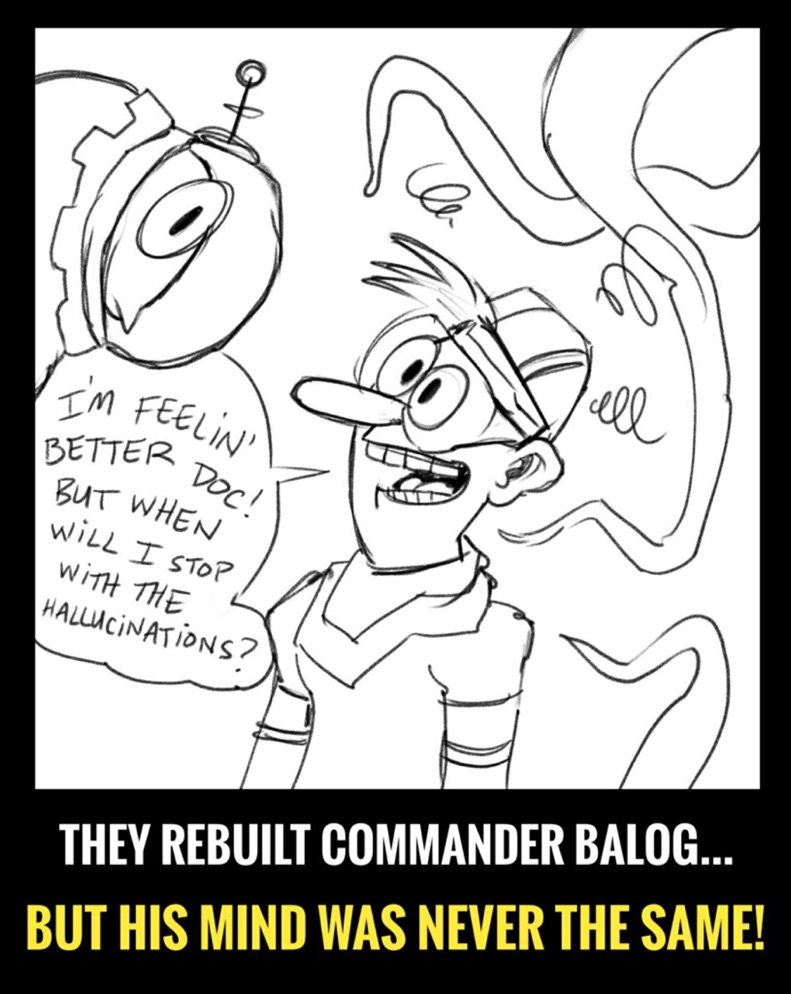Five years ago on this day I was in a traumatic car accident that left me with a broken neck, a crushed left ankle and other injuries. While I think about it every day, I haven’t really taken the time to write up what happened and the aftermath, so in honor of this anniversary I figured I’d do so.
Trigger warning: some of the images and descriptions in this tale may disturb some folks. If you think you are one of them, please skip this post.
July 26th started out as a hot, sunny summer’s day in the middle of North Carolina. It was Friday which meant I was off to Virlie’s to meet up with the Old Farts.
The Old Farts are a group of men who used to be heavily involved in local politics. They would meet once a week at a local diner for a long lunch and discussion. I came to their attention because I started a debate about removing our local Confederate War monument, and they invited me to join their table. I quite enjoyed those lunches. I really like being around people in their 70s and 80s mainly because at that age you have your priorities in order. At least one of them doesn’t even have a mobile phone.
At the time I had leased an electric car, a Nissan Leaf, POS edition. It was a POS because it kept breaking. Now there was only one person at the dealer who knew how to work on them and he was always gone, so I was usually stuck with a crappy loaner. On this morning the Leaf simply wouldn’t go. I would have said “start” but you don’t start an EV. When my ICE vehicles won’t start I have some chance of figuring out what went wrong, but not so with the POS. So the first thing that happened that day was I had to wait for a tow truck to show up to take it to the dealer.
Speaking of service, our F150 farm truck needed an oil change and an air conditioning recharge. The plan was to drive to the shop, walk into town to meet the Old Farts at Virlie’s, and then have one of them drive me back when the truck was ready.
I was in good spirits as I headed south on Hwy 87 into town. Hwy 87 is pretty straight and on this Friday it wasn’t very busy, but on one particular stretch of road I noticed a car in front of me in the distance.
While not unusual, what was unusual was that I was looking at a set of headlights in my lane.
In these days of mobile phones we’ve all seen distracted drivers, but this car was completely in my lane heading directly for me. I hit the brakes and the horn, flashed my lights and figured they would move over back into their lane.
They didn’t.
Now I don’t know if it was experience or the voice of my driving instructor telling me to always have “an out” but I took the truck to the right and off onto the shoulder. I didn’t go left as I was still hoping the other driver would get back in their lane, and I remember thinking that, hey, I’m going to take out those two mailboxes and end up with a story to tell.
At the last instant the other driver purposely turned into my truck, hitting me full force on the driver’s side front corner at what was estimated to be 70 mph.
What happened next is something of a blur. I had been in accidents before and there is this, I don’t know, dread that you feel when you realize you are going to be in a collision. The airbag deployed but I don’t remember that, I just remember being surrounded by powder and the cab getting extremely hot. The A/C was working, just not well, and as soon as the firewall was breached all the heat from the engine came in.
In every accident you worry about the vehicle blowing up (I’ve seen too many TV shows and movies) and in practice that rarely happens, but I still wanted to get out of the truck. I couldn’t open the driver’s side door so I pulled myself over to the passenger door to try to see if it would open (it wouldn’t).
It was at this point in time that I saw my left foot. It was still nominally attached to my leg but it was never, ever supposed to be flopped over at that angle.
From what I learned after the fact, the impact caused the footwell of my side of the truck to accordion, and my ankle was the result. I also had a broken big toe on my right foot, and I remember that hurt a lot more than my left foot. I assume that’s what they mean when they talk about “shock” as you would expect to be feeling a tremendous amount of pain, but I was more unhappy about my toe than my almost detached foot.
I called my wife to tell her what happened, as this was about three miles from my house. I think there is some statistic that most accidents occur within ten miles of home so this would support that.
Now at the time I was carrying two phones. I liked to play with different operating systems on Android phones, but I had an iPhone as well. My main phone was somewhere in the truck, but I was able to get to my backup phone, but since she didn’t recognize the number she didn’t pick up. We did have an answering machine so she heard me start talking and then picked up, but apparently my voice didn’t sound at all like me so it took her awhile to understand who it was. She told me she was on the way.
As I lay there across the bench seat I could hear someone outside of the truck ask if I was okay, to which I replied “No”. He told me that help was on the way.
At some point later (I really had no concept of time at this point) the fire department showed up. They had to break the window to get access to the cab, and then they covered me with a thick blanket and broke the back window. I was put in a c-collar and then waited as they used the “jaws of life” to cut open the driver’s side door. They transferred me to a back board and loaded me into the ambulance.
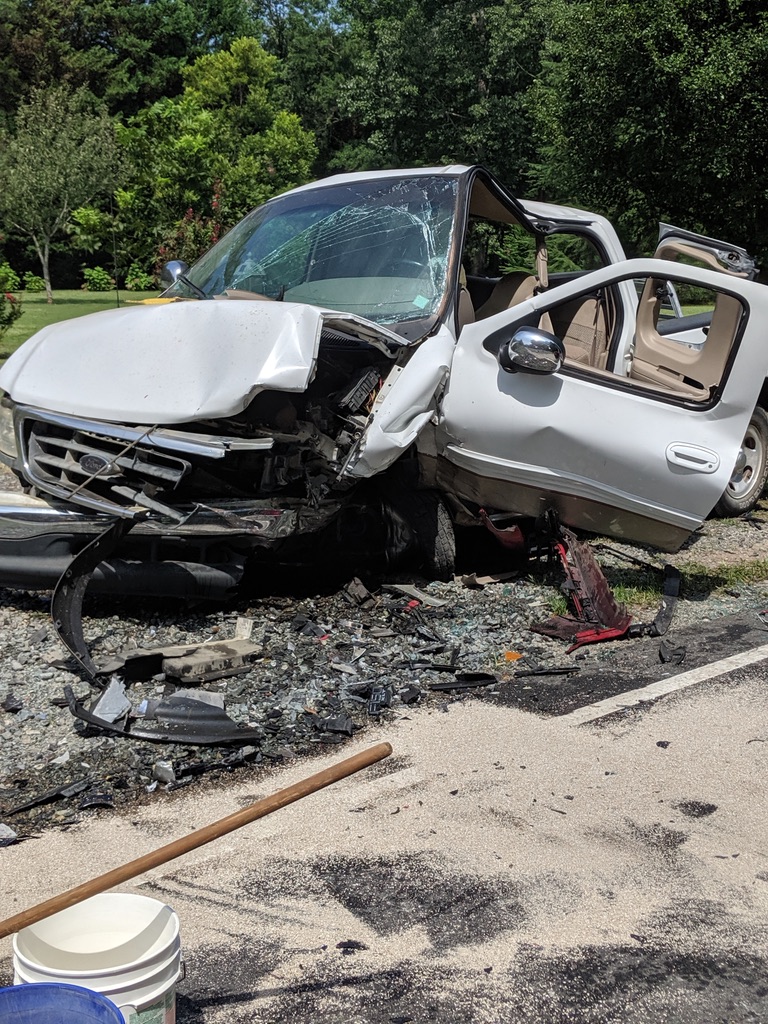
Andrea had showed up about this time and so I knew she would take care of things like finding my other phone and bringing things I would need to the hospital. She also took most of the pictures of the accident I’m sharing here.
I do remember some of the ride to the hospital. The EMT immobilized my ankle, which at this point in time had begun to hurt a lot. I also got my first painkiller which was a healthy dose of morphine. I remember a male voice telling me “you are about to be very popular” when we arrived at the Emergency Department at UNC Hospital in Chapel Hill.
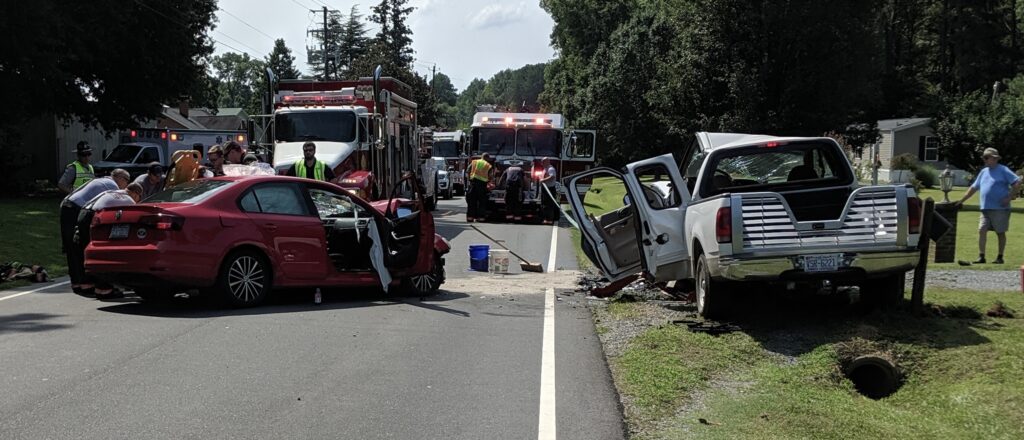
At this point I want to talk about the other driver. Not to spoil the story but we never found out why she was driving like she was or why she turned in to me at the last instant (in the picture above you can see how far on the shoulder I was). She was in a VW Passat, which isn’t a huge vehicle, but at speed and the exact place she hit me maximized the forces applied to my body. She was taken to the hospital and released, and that is about all I know. No charges were filed.
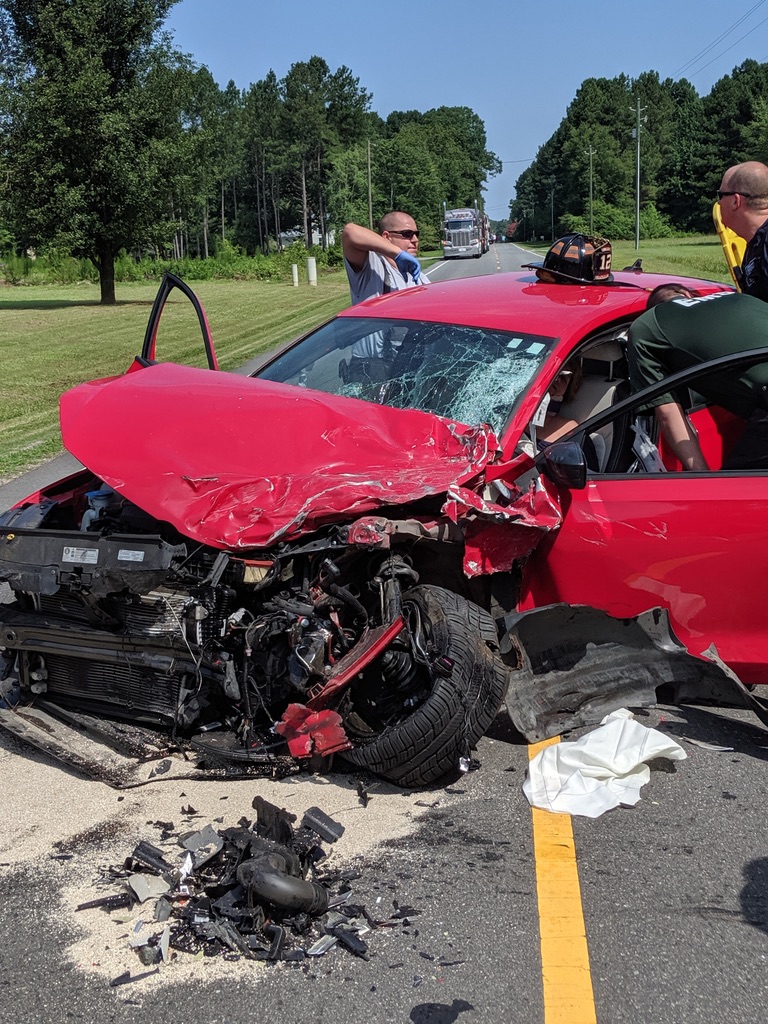
Once in the ED I got more painkillers (fentanyl this time) and they cut away my clothes and did a CT scan. They were very concerned about any spinal injuries, so I was kept strapped completely flat (i.e. I couldn’t lift my head or bend at the waist). I remember being in a room with Andrea while we waited for next steps.
At this point she asked “did you try to do something with the bank, today? They called and said it didn’t go through”.
I was running a small business at the time, and we used a service called TriNet that handled our benefits and payroll. Once a month there would be this huge sucking sound as they removed a bunch of money from the company’s checking account. My accident was on a Friday and the withdrawal was scheduled for Monday.
We didn’t have enough cash to cover it.
Every business needs to focus on cash flow, and we had just hit a point where our credit was exhausted. We were expecting a very large check from a customer by the following Wednesday, but in order to cover payroll and make sure my team got paid I had tried to move some money from our personal savings account into the business account to cover it, and I would pay it back as soon as the check cleared.
Apparently the method I chose didn’t work, perhaps because the names on the accounts were different (one was the corporation).
With Andrea’s help I called the bank. They told me that it was still possible to do a wire transfer as long as I got it in by 4pm. I asked who I could talk to in order to make that happen and they told me to just do it online. I explained that I was currently in the ED of UNC Hospital, strapped to a back board, and not really in a position to go online, and I asked if there a human who could help me with this.
The answer was “no”.
So with Andrea’s help (remember I can’t move my head at this point) I managed to get on my laptop, get on the hospital’s WiFi, log in to the web site and make the transfer. It was completed at 3:50pm.
After we sold that company and I was still interested in working, I was often asked why wasn’t I looking for another CEO position. This wasn’t the only reason but it was a major one. If you run a company where other people depend on you to get paid, it keeps you up at night. I hope to never be in that position again.
Once that was done I came to the realization that I probably wouldn’t need to do anything else but focus on getting better for a long time. Of course that started with the staff trying to better immobilize my ankle, which meant a lot more pain.
I don’t remember much about the rest of that day, but I was moved to a room and scheduled for surgery. My left ankle was crushed (the impact basically took the heel of my foot and tried to relocate it six inches up my leg), and my right big toe was broken. I had some cracked ribs and most concerning, a fracture in my neck at C2.
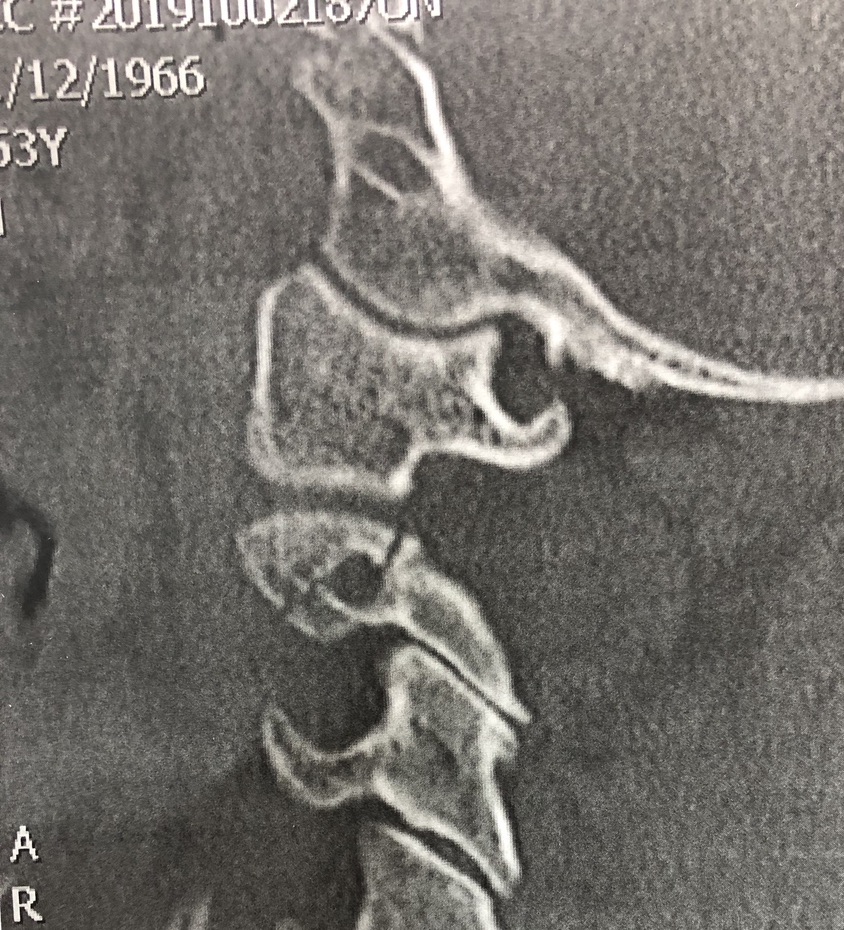
I forget what they called the section of the hospital where I was being kept but while it wasn’t intensive care it was some level just below it. I had a dedicated nurse who checked in on me often, and I spent most of my time sleeping, probably due to all the drugs. I was still on a backboard so I really couldn’t move much more than my hands.
I remember at some point I was told I needed to urinate. Now think about laying completely flat on your back and being told to pee. They were able to tilt the bed, much like you see in those movie versions of Frankenstein when they have animated the monster, but I was still unable to produce anything. I think they ended up using a catheter but I don’t remember.
I was lucky in that they determined I had no lower back injuries, so I was removed from the back board. My neck would need to remain immobilized for months, but at least I could bend at the waist.
You would think that with broken bones they would want to operate immediately, but due to the severity of my injuries the area was too swollen. So my first surgery was to install a “temporary external fixator” or “ex-fit” to keep my ankle in place until they could operate. This is what it looks like, installed:
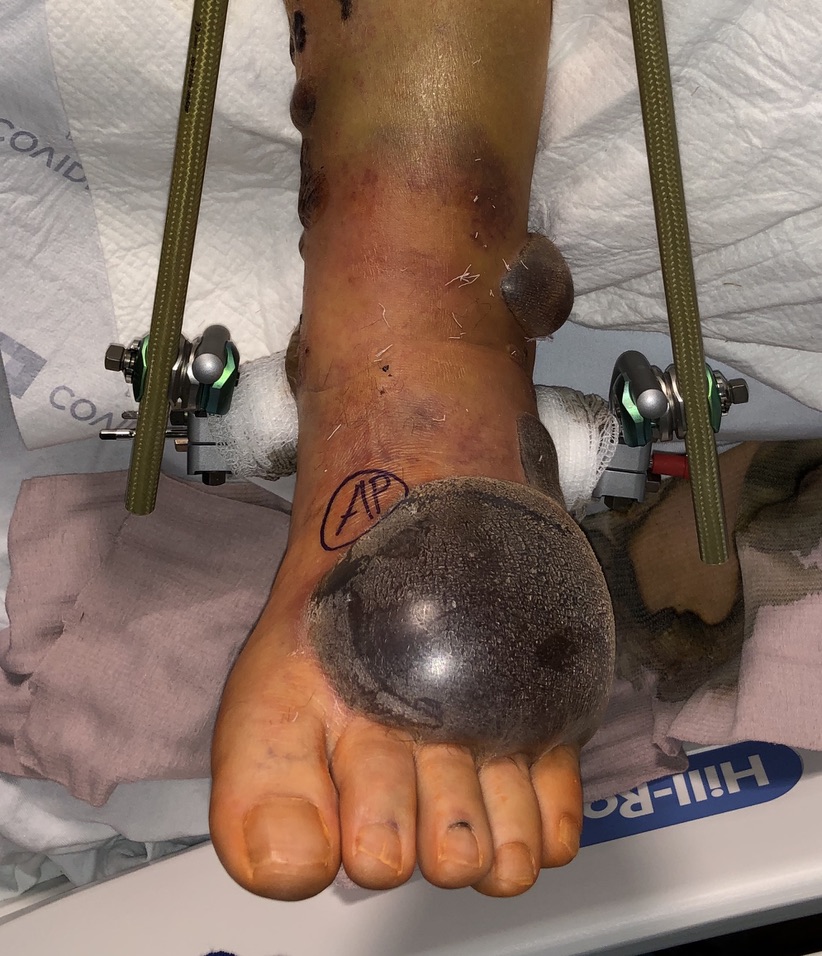
Note that those red bumps are blood blisters. They didn’t want to drain them until the skin underneath had time to heal (and that large one produced about 200 mL when they finally did it).
Those rods tend to snag on things, so most of the time the whole bottom of my leg was kept wrapped.

Now there wasn’t much to do but sleep and wait. I can remember having trouble sleeping at times but the drugs made it easy. I don’t have much of a sequential memory of what happened over the next two weeks, but a couple of things stand out.
The first happened, I think, on the Monday after my accident. Over the past five years I’ve interacted with a large number of medical professionals, and a certain percentage of them seem to display behaviors associated with Asperger Syndrome. One of them was the resident who was assigned to me, and on this morning he walked in and without fanfare went “you have cancer”.
Now to many this would be shocking to hear, but I just laughed. I had no idea what he was talking about but I was certain I didn’t have cancer (spoiler: I was right).
During my stay I was subjected to a lot of imaging, mainly CT scans. Apparently on one of them they detected a mass on my lung. It was just shy of 5mm in width. Not to ruin the narrative flow, once I got out of the hospital I made an appointment with an oncologist and they decided to keep an eye on it but felt it wasn’t cancerous. It was so small that even if they tried to biopsy it they probably couldn’t find it.
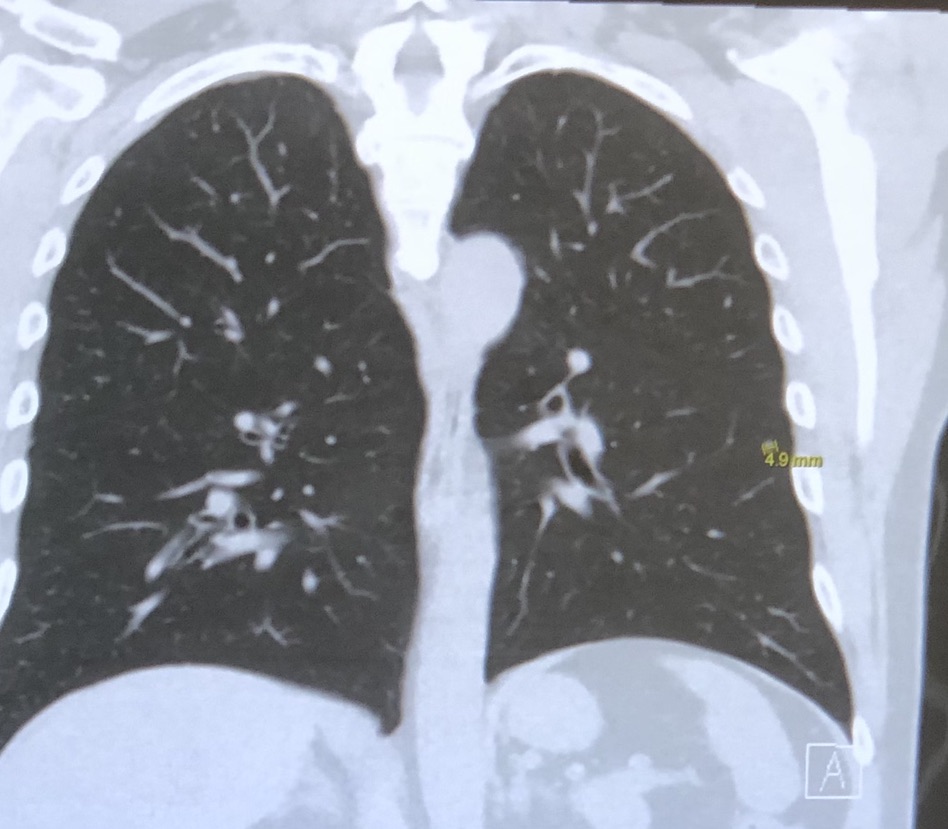
I can remember another incident that happened during this time. While in the hospital I became very dependent on my iPhone and my Apple Watch. Even though I had a laptop, being in a C-collar (the model was a “Miami J“) made it difficult to look at the laptop and to type, so I communicated with the rest of the world on my mobile, and when I was dozing my watch could tell me if something happened to which I needed to respond (say, a text from Andrea). I could also FaceTime. At the same time I was in the hospital my friend Ben had surgery on his nasal cavity and we made quite the pair.
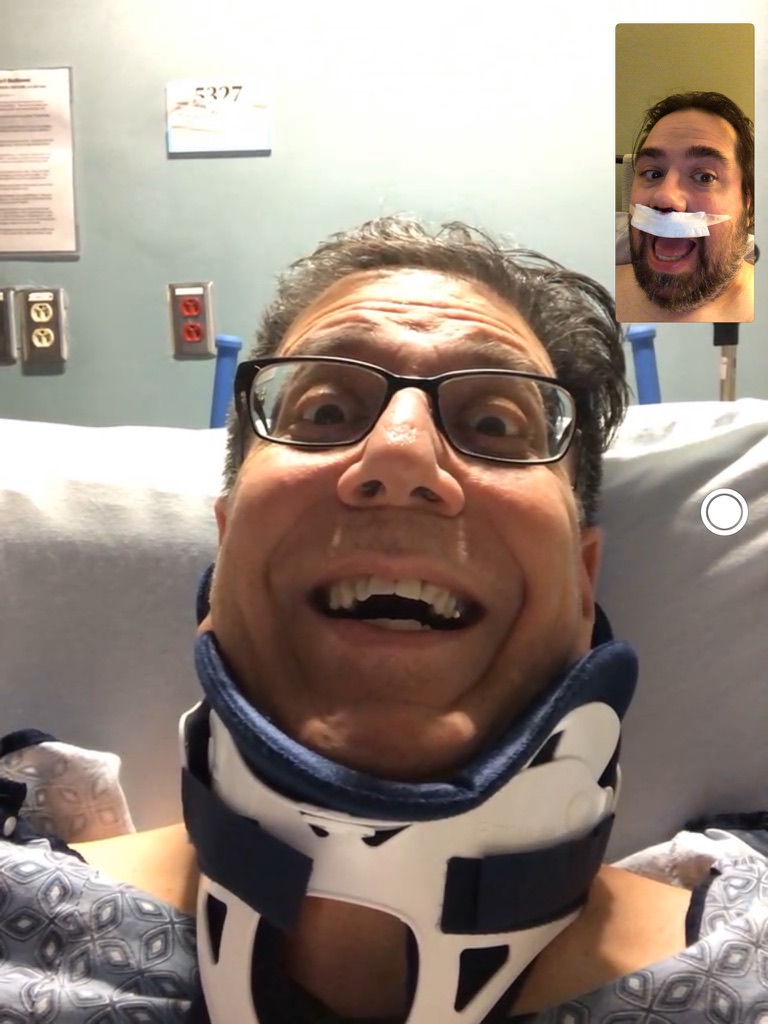
One evening my watch alerted me that my heart rate was extremely high (I think it was north of 160 beats per minute). Soon after that my room was full of medical professionals. I had two IV ports installed, one in each arm, and the one on the left was put in during the ambulance ride to the hospital. It apparently had become infected. I didn’t watch as it was removed (it is hard to look down in a C-collar) but apparently it was nasty. I still have a small scar.
A couple of things kept me going. First of all, Andrea would visit almost every day (as my stay progressed I was happy to let her have a day off). I had no desire to eat so I would sometimes order her food. I’m not sure if this is still the case but the food at UNC was pretty good. They had a large menu with a variety of choices, and you would simply call a number and place your order, and about an hour later it would show up. I remember really liking the smoothies.
One issue was that people tended to call in at about the same time, so you would end up having to wait on hold. UNC’s phone system is by Cisco, and so they use the default Cisco on-hold music. To this day that sound is triggering for me (grin).
I also had a number of friends who would come by for a few hours. Remember that this was just before COVID, and I can’t imagine the isolation I would have felt if the accident had occurred during that time.
Another thing that was amazing was the nursing staff. Now I had two types of people help me: nurses and nursing assistants. Nurses were involved in things that were closely related what medical doctors did, such as putting in an IV. Nursing assistants were the people who made staying in the hospital bearable by taking care of your physical needs, such as changing the sheets, bathing you and giving you a fresh gown or helping you to the bathroom. Both were amazing, but it was funny to see how certain nurses (well one) thought of nursing assistants. At times something would happen that would normally be addressed by an assistant, but a nurse would be in my room. Most of the time the nurse would just take care of it, but there was one nurse in particular who would tell me that she would go and get a nursing assistant.
I didn’t like her very much.
But I want to stress the rest of the staff was amazing. I regret that I didn’t take better notes on names, because at the time I had pretty much memorized the rotation as well as their names (not much else to do) and I never thought I would forget, but as time went on I did.
I guess this is a good segue to talk about bathroom stuff. I didn’t eat much while I was in the hospital. I really didn’t feel hungry. I did drink a lot, and so I had to pee. That process was pretty simple as they gave me a little container that hooked on to the rail of the hospital bed (which was a fancy Hill-Rom). I would raise the back of the bed, flip aside my gown and attempt to fill the bottle.
They were very interested in my urine output, so once I was done I was supposed to ring the nurse so they could write it down. I didn’t once and got scolded. When I left the trauma intensive care unit (I forget what they called it) I spent a few days in a shared room. I can remember I was really proud of myself when I was able to produce about 100mL of dark urine until the guy in the other bed hit 600mL. I found out later that he was on diuretics so that was cheating.
They took that guy out and replaced him with a young man who had, and I’m not making this up, been shot in the ass. It was kind of interesting to listen to his conversations. Apparently one fragment nicked his colon so he had a colostomy bag and it got infected. He was on a liquid diet while I was trying (unsuccessfully) to eat things like hot dogs and pasta. I do remember he had a great attitude.
I ended up getting a single room after that, and would have one for the rest of my stay.
Now one major issue with taking a lot of narcotics is that you don’t poop. As I will explain later on in this tale, it turns out I like to poop more than I like the drug high. Scared straight, as it were. The fact I couldn’t poop didn’t keep me from trying. First they gave me a bed pan and I swear there is no way, under any kind of normal circumstance, that I am going to use a bed pan. My body just won’t cooperate. I can remember times in my life when I really, really needed to poop and if that happened and there was no other option I guess I would make a bed pan work, but without that urgency it ain’t gonna happen.
So they brought me a bedside toilet. With the ex-fit and my bandaged leg it was a bit of a production to get me on it, and there were a few small successes along the way but nothing major. Not to over share (well, over share even more) but when I wake up, I get up and pee, and 30 minutes later I poop. Which means I ended up on the bedside toilet mostly in the morning.
Mornings is when they have rounds.
If you ever end up having a long hospital stay (and I hope you never do), shame is the first victim. You are in this hospital smock with no back and so many strangers are poking and prodding you that you just stop caring. So when I was on the toilet when a group of 6-8 people came by for rounds, I would just roll with it:
“Come one, come all and witness the majesty that is the Balog morning bowel movement!”
After about two weeks in the hospital, they decided that it was okay to try to repair the damage. My surgery date was a surprise as they did a bad job of communicating it to me or Andrea, but one morning I was rolled into the OR and several hours later (I seem to remember six or seven) I came out with new metal in my leg.
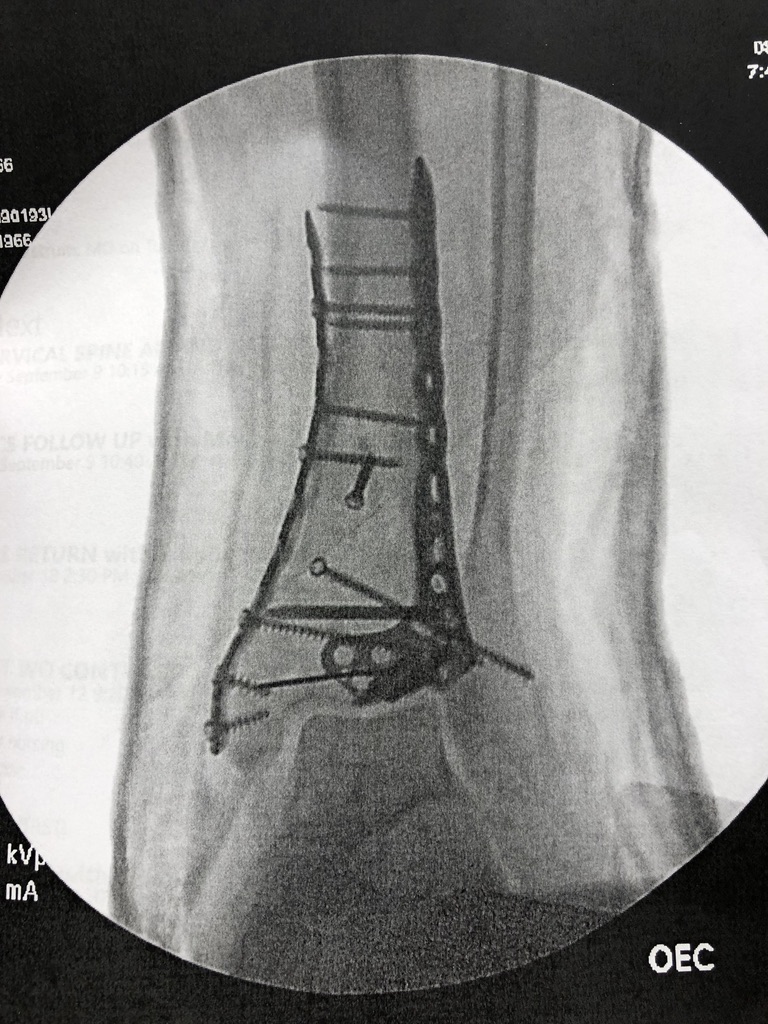
It hurt. A lot.
I’m not one to promote drug use, but there is a magical substance called Dilaudid (hydromorphone). It is lovely. To this day I have fond memories of the nurse coming in, injecting it into my IV line, and this amazing … warmth … starting in my right shoulder and flowing down to my damaged left ankle. It was sooo good.
But remember, kiddos, if you do drugs you don’t poop, and you really, really want to poop.
At this point, the ex-fit has been replaced by a big cast that stopped just below my knee. After a few days, I was moved to the rehabilitation wing. I didn’t like the room as much as my old one, but at this point they gave me a walker and I was at least able to move myself from the bed to the bathroom.
I also started rehab, which wasn’t bad and for the most part I liked it. Not only did I do exercises to get my strength back, they also taught me how to work with one less limb. They had a mocked up kitchen and I was taught how to move, say, a plate from one side of the counter to the other while still using my walker (you lean and pass it from one hand to the other). I used a lot of what I learned when I got home.
The main downside to rehab was having to do it while being extremely constipated. They took an x-ray and there was basically a softball-sized mass in my colon that was just spinning in lazy circles. They went in from the top and from the bottom to try and move it but nothing really worked. My comfort was alleviated somewhat but it wasn’t until I was home for a couple of weeks before things started approaching normal.
After over four weeks in the hospital they told me I was ready to go home. I was so eager. Andrea had been working to make things ready, from installing a ramp so I could get into the house through the front door …
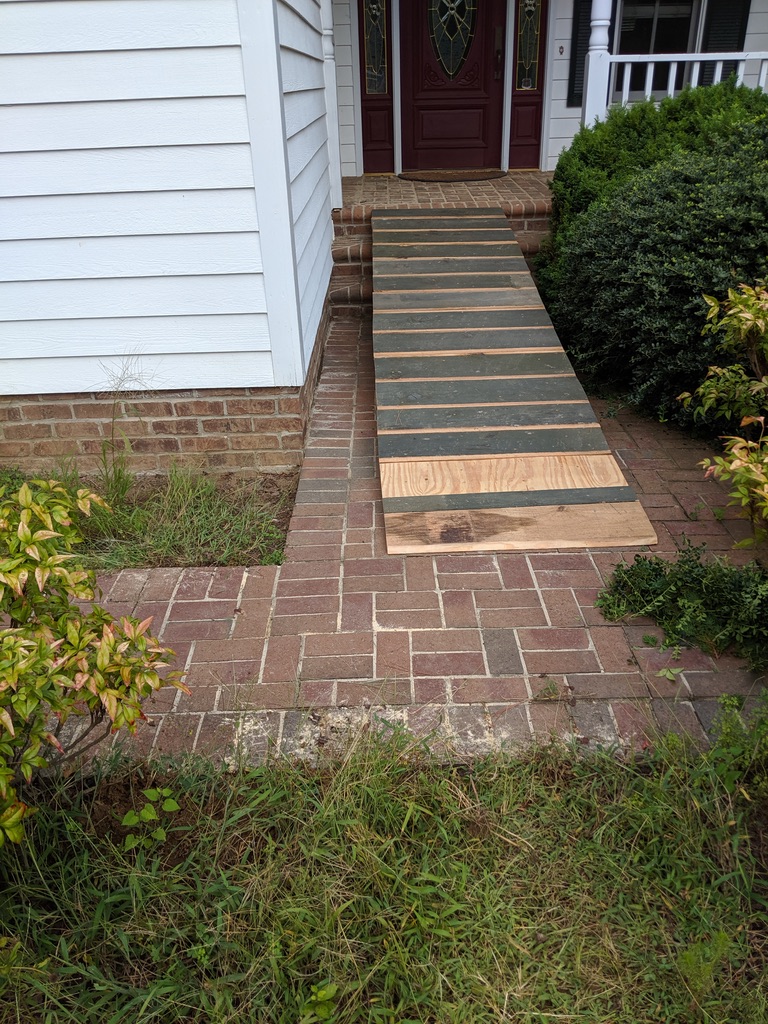
… to finding a shower stool and rails that we could put around the toilet.
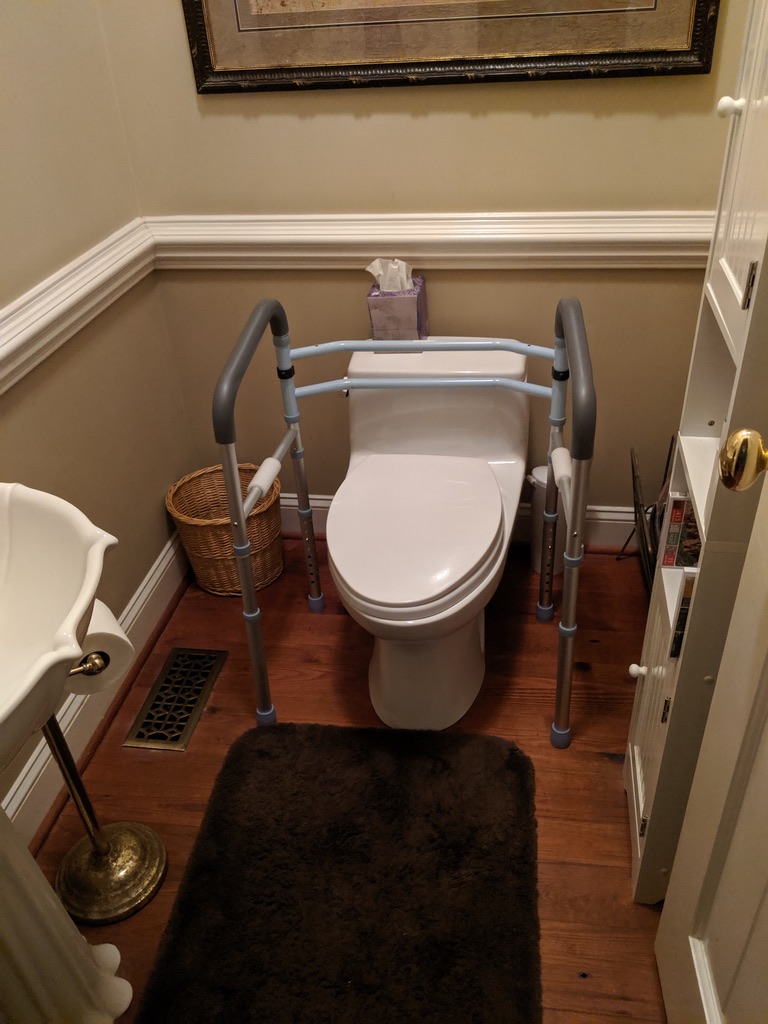
My next to last day consisted of a test to see if I was ready (it included things like having me get down a hallway using my walker in a set amount of time) and I got to take a shower for the first time in a month. Andrea found this plastic sock-thingie that you could put over the cast to keep water out, and I was surprised that the staff had never seen it (they took pictures of the box).
After 33 nights I finally got to go outside. I was ready.
Before I go on I do want to thank everyone at UNC Hospitals in Chapel Hill, NC, for taking such good care of me. I hope to never, ever use your services again but you made my stay and recovery as pleasant as possible.
Even though I was home, there were still months of work before I could even consider getting back to normal. I was still in a C-collar and told I would need to remain in it for four months, and my leg was in a cast.
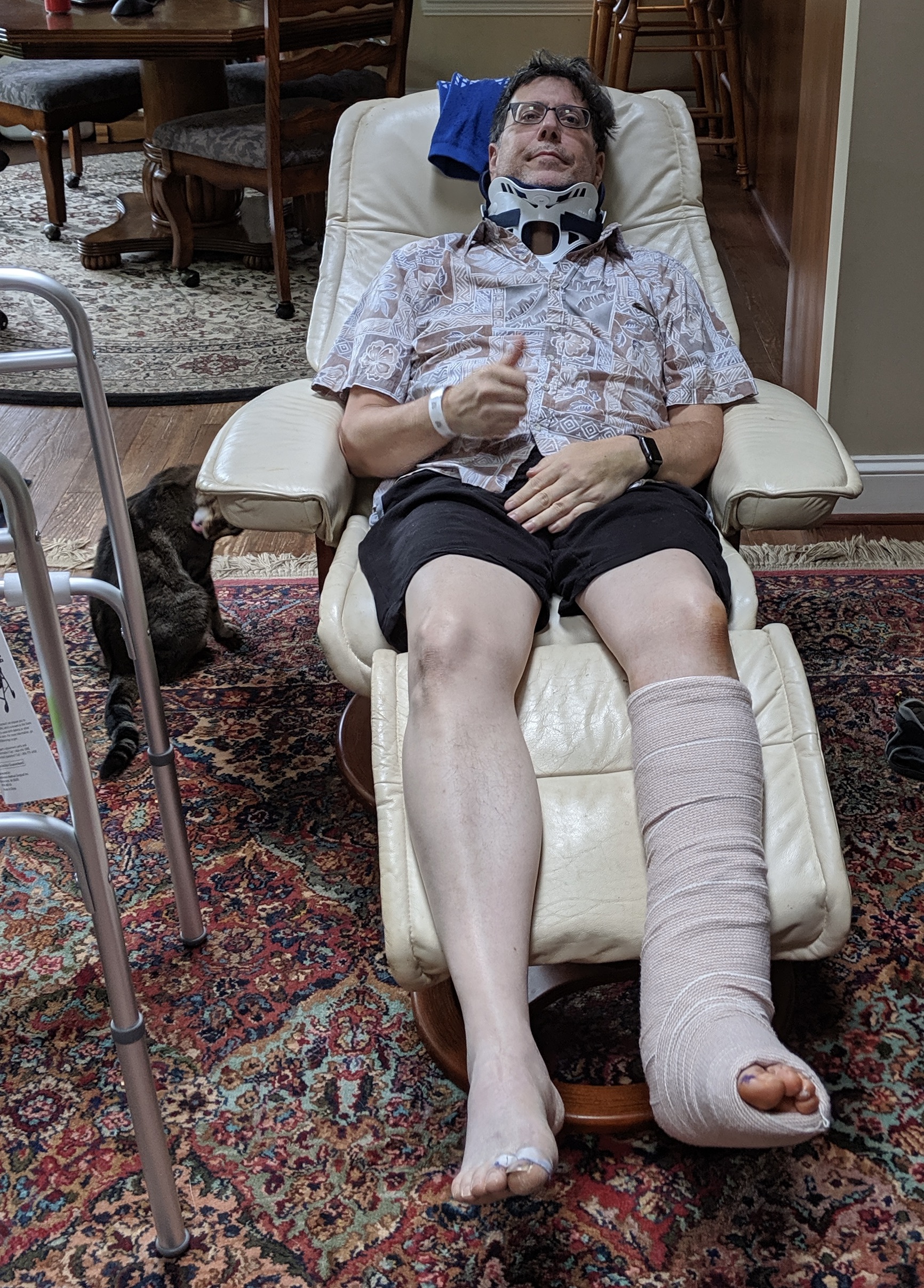
The C-collar made showering interesting. I would shower in the collar and then I would lay down on the bed and Andrea would gently remove it while I tried to remain perfectly still. She would replace the pads, which were now wet, with fresh ones and return the collar to my neck.
I still spent a lot of time sleeping, and when I wasn’t sleeping I wasn’t much good for anything other than watching TV, but I did manage to set up my office so that I could use my computer and still keep my leg elevated. I slowly started to return to work.
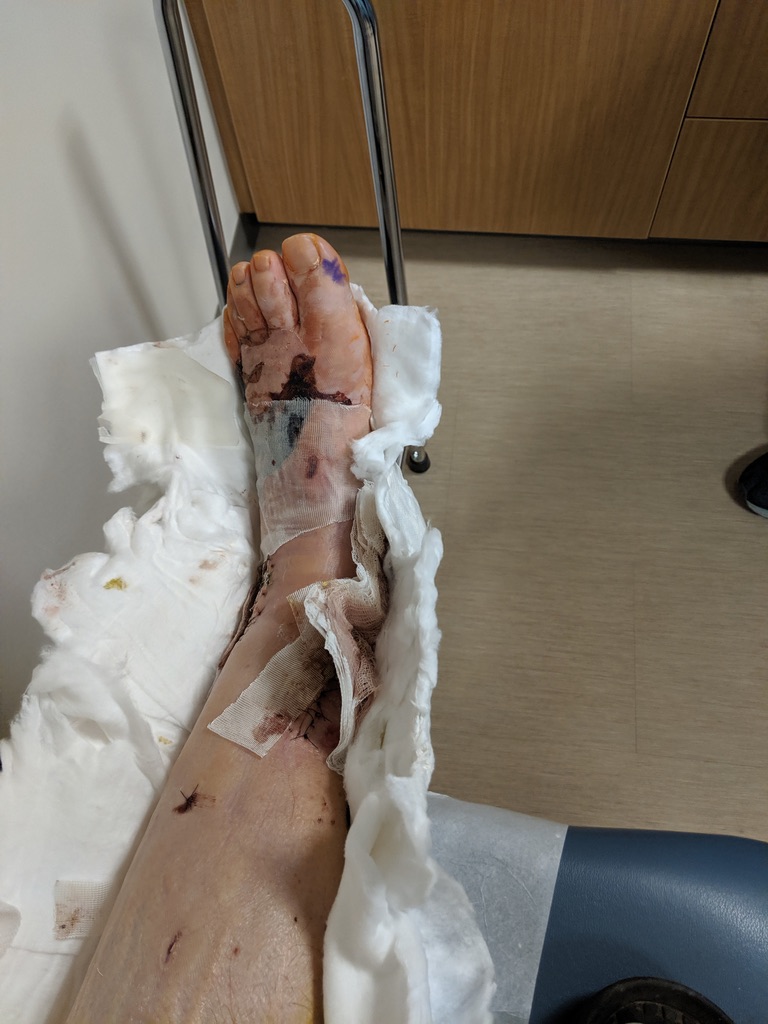
The next few months are a bit of a blur. I did get my cast off and I replaced it with a “soft” boot to use when I was in the house and a “hard” boot for when I left the house.
I started physical therapy three times a week. Again, I know people hate physical therapy but I rather enjoyed mine. My therapist, Katie Kennedy, is amazing and she is also a Pilates instructor. She has a machine called a “Reformer” and I really enjoyed using it.
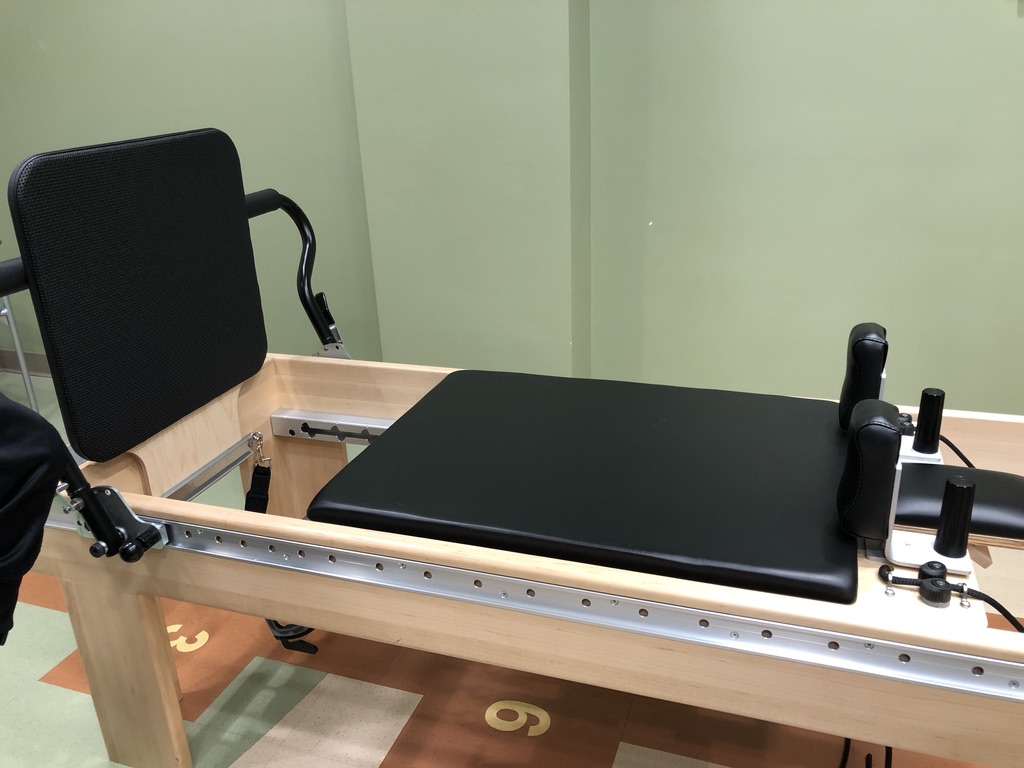
One funny story I like to tell is that when I got well enough to leave the house, we wanted to go to a local diner called Virlie’s Grill (the same one where I’d meet the Old Farts). On Friday’s they have a “grill night” where they grill steaks, chicken and seafood, and before my accident we went there about every other week.
This particular Friday I came into the restaurant. I’m using my walker, I still have on my C-collar, and my leg is in a boot. The place got deathly quiet as people stopped and looked at me, and I said “You leave the toilet seat up one too many times …”
It killed.
The biggest challenge to my return to health was the stupid C-collar. About six weeks after I left the hospital we went for a checkup, and I was certain the doctor was going to tell me I could leave the collar off. When said said everything looked good my spirits soared but when she said I’d need to stay in it eight more weeks I just cried. It wasn’t the first or would it be the last time I shed tears over my predicament.
Another time was when I fell. I was lucky that I only fell once and I still don’t know what happened, but I was going from the study to the bedroom and suddenly I was on the floor. In rehab they told me how to deal with it: you roll over on your knees and then crawl until you are next to something (in my case a sofa) that you can use to lift yourself up. I got myself upright, hobbled over to the bed, and just wept.
On the bright side PT was going well. Katie got me using crutches versus my walker, which made getting around a little easier, and within two weeks I was using a cane. I did finally get out of that C-collar, which meant I could drive myself again, and that more than anything made me feel like I was getting better.
In November my father turned 80, and my sister had arranged a party. Of course she chose a restaurant where the party was on the second floor with no elevator, so I worked with Katie to figure out how to use stairs. She taught me the “heaven/hell” method. Going up you are going to heaven, so lead with your “good” foot”. Going down, lead with your “bad” foot.
Also in November we sold our software company. Ultimately that turned out to be a bad move, and I can’t help but feel that if I had had some role in the negotiations it would have turned out differently. Ultimately it worked out (I really enjoy my current job) but I am still haunted by the “what could have beens”.
In December I took my first business trip since the accident, an overnight visit to Ohio. It presented some challenges but I was able to make it there and back. It was interesting to deal with the fact that one of my ankles was much larger than the other, and I had to start buying two pairs of shoes since the left foot was one size large than the right.
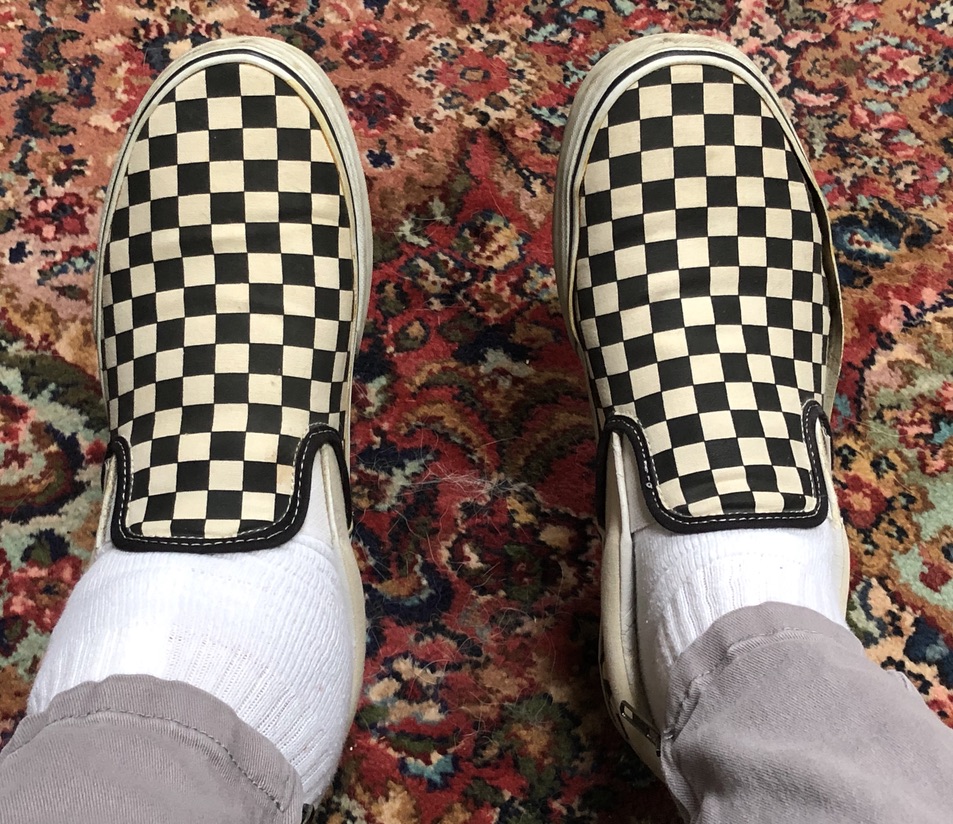
At this point in time I wish I could say that I went on to heal and everything got back to normal, but that wasn’t the case. In March one of the screws in my ankle decided to come out.
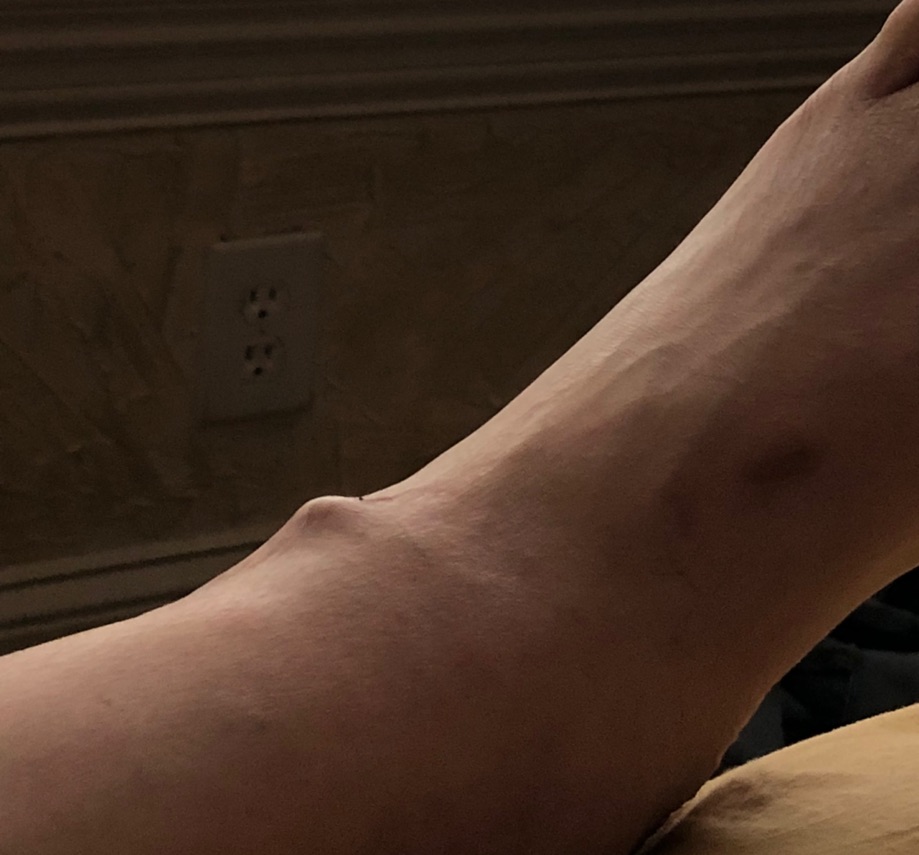
Despite the jokes from my friends as to whether or not it took a Phillips-head screwdriver or hex, I scheduled surgery to have it removed. Then COVID hit.
It seems so far away, but if you remember when the pandemic first started there was little information on the disease so people reacted with caution. Hospitals shut down all non-urgent surgeries, including mine. It wasn’t until April that I had my operation. They removed the pesky screw but they had no idea why it was being rejected by my body (there was nothing like an infection near the site to indicate other reasons).
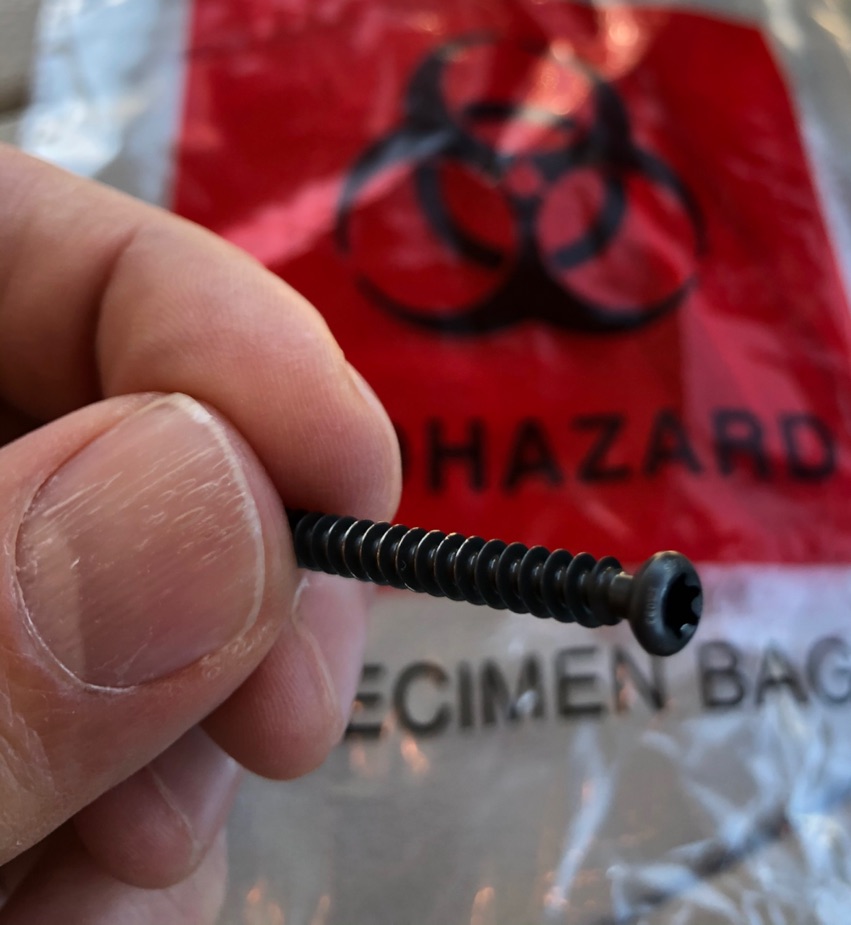
By this time I was getting used to having surgery, but I could never get used to the recovery. Because the skin is so tight around the ankle my incisions just kept bleeding. It was annoying. Luckily with time it finally stopped – just in time for another surgery.
The decision was made to remove the rest of the metal in my ankle. At the time I thought this was a good idea (you really, really need to act as your own advocate when dealing with medical advice). While I had recovered some level of motion, often it felt like there was a tight metal band around my ankle which made it harder to have a natural gait. I figured that with it gone that would improve.
I went through another cycle of surgery followed by recovery, and I had similar issue with bleeding. But on the upside my ankle felt better and my physical therapy, now once a week, showed a lot of improvement.
At the end of 2020 I had a follow up appointment with my doctor to see how it was going which included x-rays. I was jazzed because things were going so well at PT, but my mood was torpedoed when he came back into the room. With the metal removed, my ankle had collapsed upon itself and then the bones fused. Not only did this make me at least an inch shorter on that side, it also ruled out the possibility of an ankle replacement in the future.
I went to the car and just cried.
Anyway, I’m not one to wallow so I just got on with it. I added a lift to my left shoe to help with the lopsidedness and my limp comes and goes over a given day. I have considered having the foot removed entirely. I’ve seen people with prosthetics that can run and I am not able to run (I can do this kind of rapid shuffle-hop if I need to, say, get to the car in the rain). But as I age I don’t want to have to put on my foot just to go to the bathroom in the middle of the night. I also seem to be okay for most tasks, including redoing a portion of the roof of our barn where I spent a lot of time ten feet up walking over rafters. It could be worse.
While the accident is something I think about every single day, last year I totally forgot about the anniversary so at least it isn’t top of mind. I can drive by the scene of the accident without experiencing any distress, but every so often something will happen (like I’ll hear that damned Cisco on-hold music) and it will trigger memories.
But for the first time in my life I feel old. We never had children so while I do adult things like have a job and own a house, before the accident I didn’t feel much different in my 50s than I did in my 30s. That all changed when the accident happened and I lost so much mobility. My youth, more than anything, is what the accident robbed from me.
It could have been much worse, and throughout it all I had the support of Andrea (I don’t deserve her) and my friends who were amazing. I hope no one has to go through what I did but if you do, remember that it does get better.
I’ll close with a cartoon by my friend Chad Essley:
